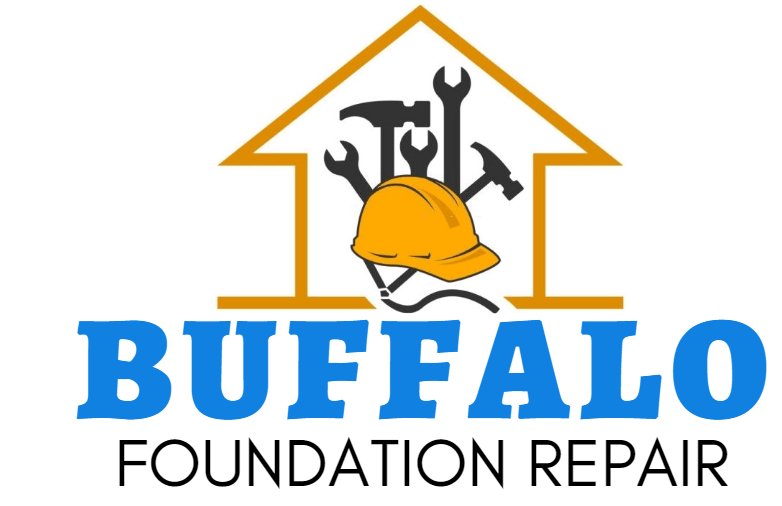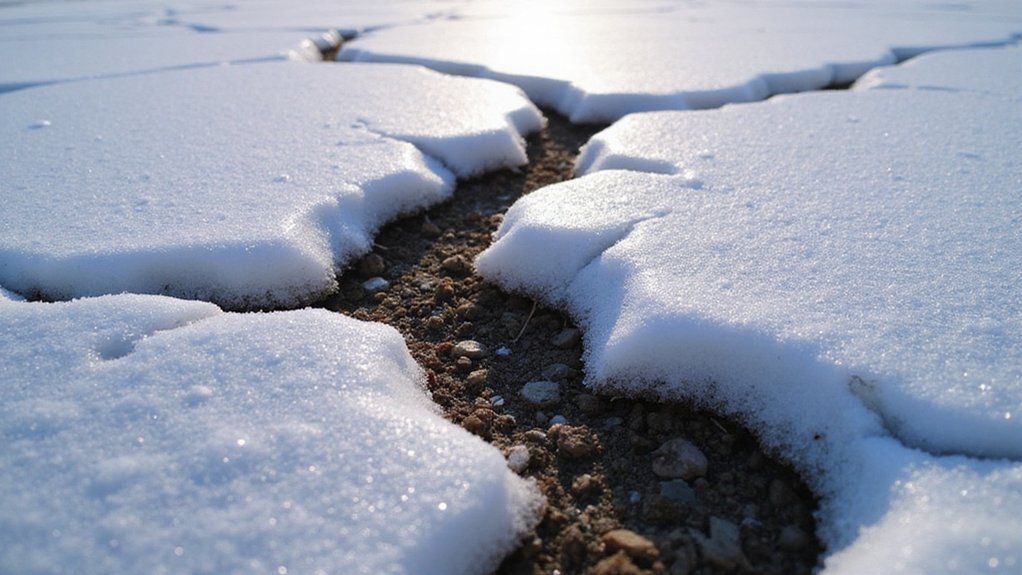If you own a home in Buffalo, you know the struggle of dealing with shifting foundations all too well. The region’s freeze-thaw cycles and high water table wreak havoc on your property, causing cracks, uneven floors, and potentially costly repairs. But understanding the underlying reasons behind this common issue can help you stay one step ahead and protect your investment. Explore further to uncover the unique factors that make Buffalo’s foundations so prone to shifting, and learn proven strategies to keep your home standing strong.
Freeze-Thaw Cycles and Ground Expansion
Freeze-thaw cycles are a common and troubling phenomenon in Buffalo, where the ground frequently expands and contracts with the changing temperatures. As the soil moisture content rises, the water freezes, causing the ground to swell. This frost heave dynamics disrupt the soil and can lead to problems for building foundations.
When the temperatures rise, the ground thaws, causing the soil to shrink and settle unevenly. This uneven settlement can crack and damage the foundations, leading to costly repairs. Understanding and addressing these freeze-thaw cycles is pivotal for preserving the structural integrity of buildings in Buffalo.
The Role of Buffalo’s High Water Table
Buffalo’s high water table plays an essential part in the challenges posed by the region’s freeze-thaw cycles. With high groundwater levels, the soil is often saturated, making it more susceptible to expansion and contraction as the temperatures fluctuate. The seasonal water table fluctuations add to the problem, as the ground swells and shifts with the changing moisture levels. This instability can wreak havoc on the foundations of buildings, causing cracks, uneven settling, and other structural issues. Fixing foundation issues requires addressing the root of the problem.
Impact of Clay-Rich Soil on Foundation Stability
Because clay-rich soil is highly susceptible to swelling and shrinking with changes in moisture content, it can pose significant challenges for the stability of your home’s foundation. This soil composition can lead to uneven settling, cracks, and even structural damage over time. Additionally, poor drainage in clay-rich areas can exacerbate these issues, as excess moisture causes the soil to expand, putting pressure on your foundation. Regular foundation inspections can help identify and address these problems early on. Comprehending the impact of your local soil conditions is pivotal for maintaining the long-term integrity of your home. With proper precautions and proactive measures, you can help safeguard your foundation against the effects of Buffalo’s freeze-thaw cycles.
Common Foundation Issues in Buffalo
As a homeowner in Buffalo, you may encounter several common foundation issues that are exacerbated by the area’s freeze-thaw cycles. The clay-rich soil composition can cause your foundation to shift and crack, leading to uneven floors and sticking doors.
Proper drainage considerations are paramount, as excess moisture from melting snow and heavy rains can seep into the soil, further destabilizing your foundation. These problems can be frustrating, but understanding the unique challenges of the region and taking proactive measures can help maintain the integrity of your home’s foundation.
Strategies for Mitigating Foundation Shifts
Given the region’s temperamental climate, it’s crucial to implement proactive strategies to mitigate foundation shifts.
Consider these options:
- Leverage strategic excavation techniques to guarantee proper soil compaction and drainage around the foundation.
- Incorporate underpinning solutions, such as piering or slabjacking, to stabilize and strengthen the existing foundation.
- Conduct regular inspections and maintenance to identify and address any issues before they become severe.
- Educate homeowners on best practices for managing moisture, landscaping, and other factors that can impact foundation stability.
Importance of Proper Foundation Design and Construction
Proper foundation design and construction are fundamental to ensuring the long-term stability and integrity of your home. Thoughtful soil compaction and thorough drainage considerations are paramount factors.
Builders must account for Buffalo’s freeze-thaw cycles, which can wreak havoc on poorly designed or constructed foundations. Careful planning, high-quality materials, and skilled workmanship are essential to preventing costly foundation issues down the line.
Maintenance and Monitoring for Foundation Longevity
While your home’s foundation may appear sturdy, it requires ongoing maintenance and monitoring to safeguard its durability.
To verify your foundation’s longevity, consider the following:
- Regularly inspect your home’s exterior and interior for signs of foundation settling, cracks, or uneven floors, which could indicate soil moisture content issues.
- Guarantee your property’s drainage systems, such as gutters and downspouts, are functioning correctly to divert water away from the foundation.
- Schedule professional foundation inspections periodically to identify any potential problems before they escalate.
- Keep an eye on the soil around your home, and address any changes in moisture levels or soil movement promptly.
Frequently Asked Questions
What Are the Best Foundation Repair Techniques for Buffalo Homes?
To combat seasonal soil heaving and hydrostatic pressure effects, you can try pier and beam foundation repair or supporting. These techniques stabilize your home, ensuring it weathers Buffalo’s freeze-thaw cycles with ease.
How Often Should I Inspect My Home’s Foundation?
You should perform periodic inspections of your home’s foundation to monitor for any shifting or cracks. Regular foundation monitoring helps guarantee your home’s stability and safety, providing peace of mind.
Can I DIY Foundation Repairs or Do I Need a Professional?
You can DIY foundation assessments, but professional foundation evaluations are often required to properly identify and fix issues. Attempting complex repairs yourself could do more harm, so consulting an expert is strongly recommended.
How Do I Know if My Foundation Is Shifting or Settling?
If your floors are uneven, walls have cracks, or doors/windows stick, these are signs your foundation may be shifting. Potential causes include soil erosion, poor drainage, or faulty construction. It’s best to have a professional inspect the issue.
What Are the Long-Term Consequences of Foundation Problems in Buffalo?
If your foundation experiences ongoing soil moisture fluctuations and seasonal temperature variations, it can lead to structural damage, compromised safety, and reduced property value over time. Addressing these issues promptly is imperative for protecting your home.


Recent Comments